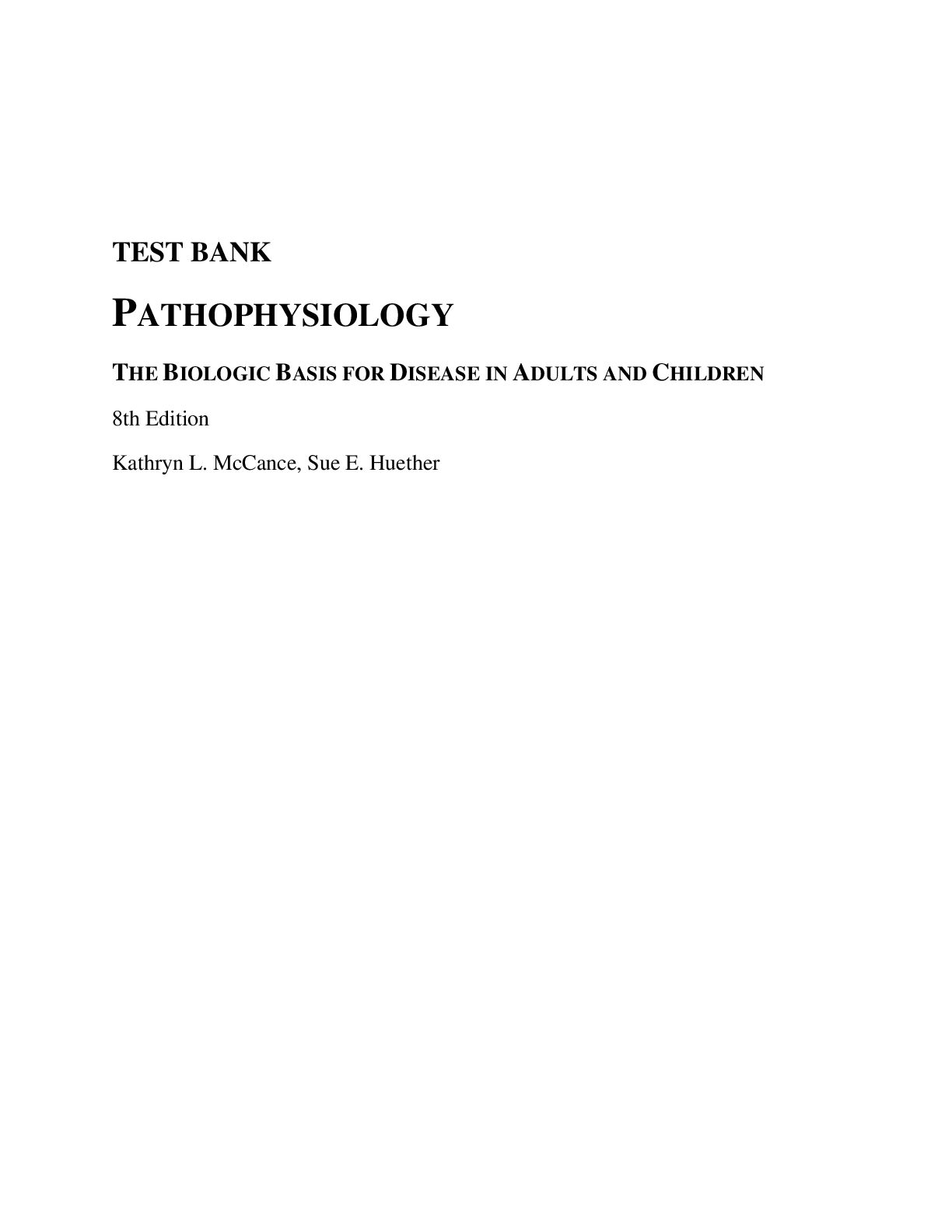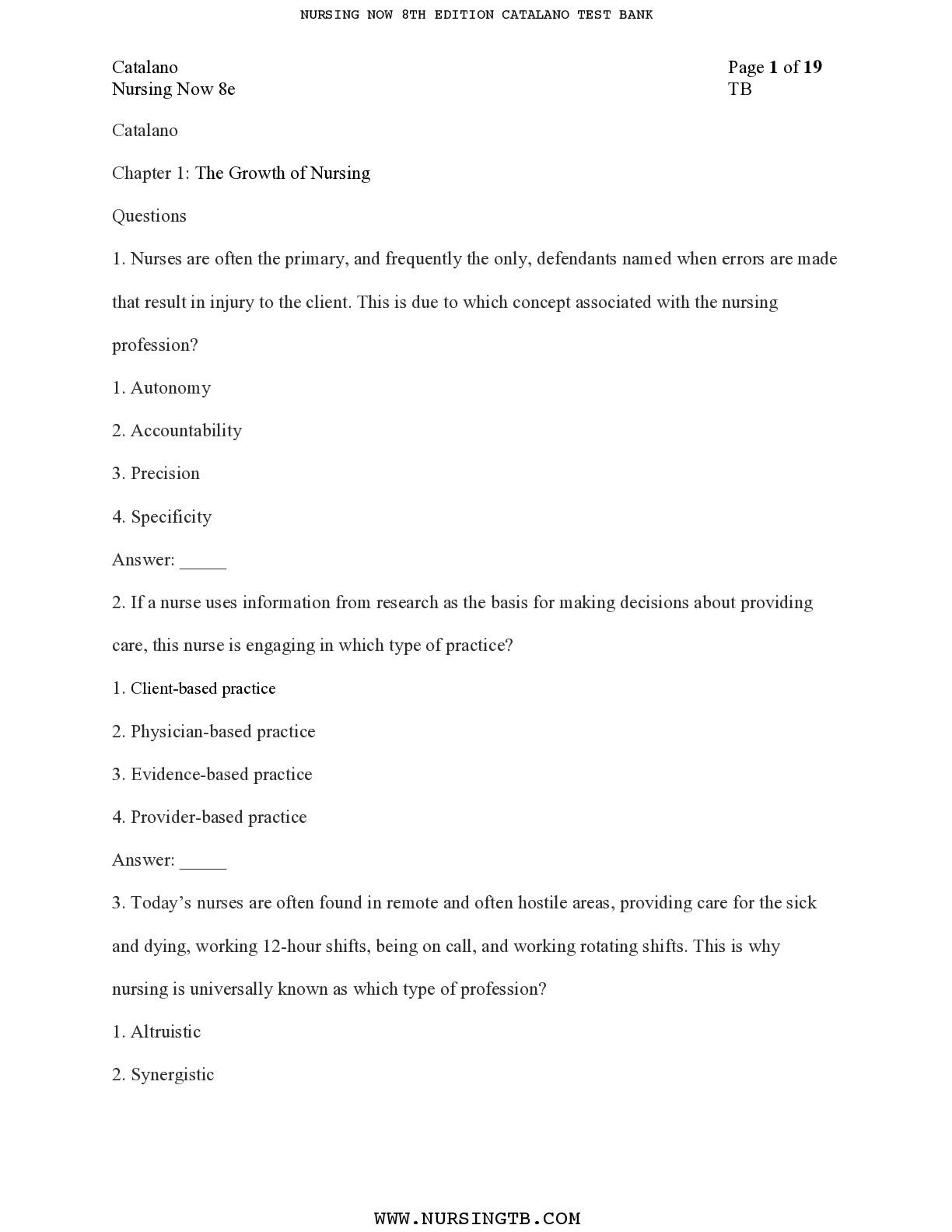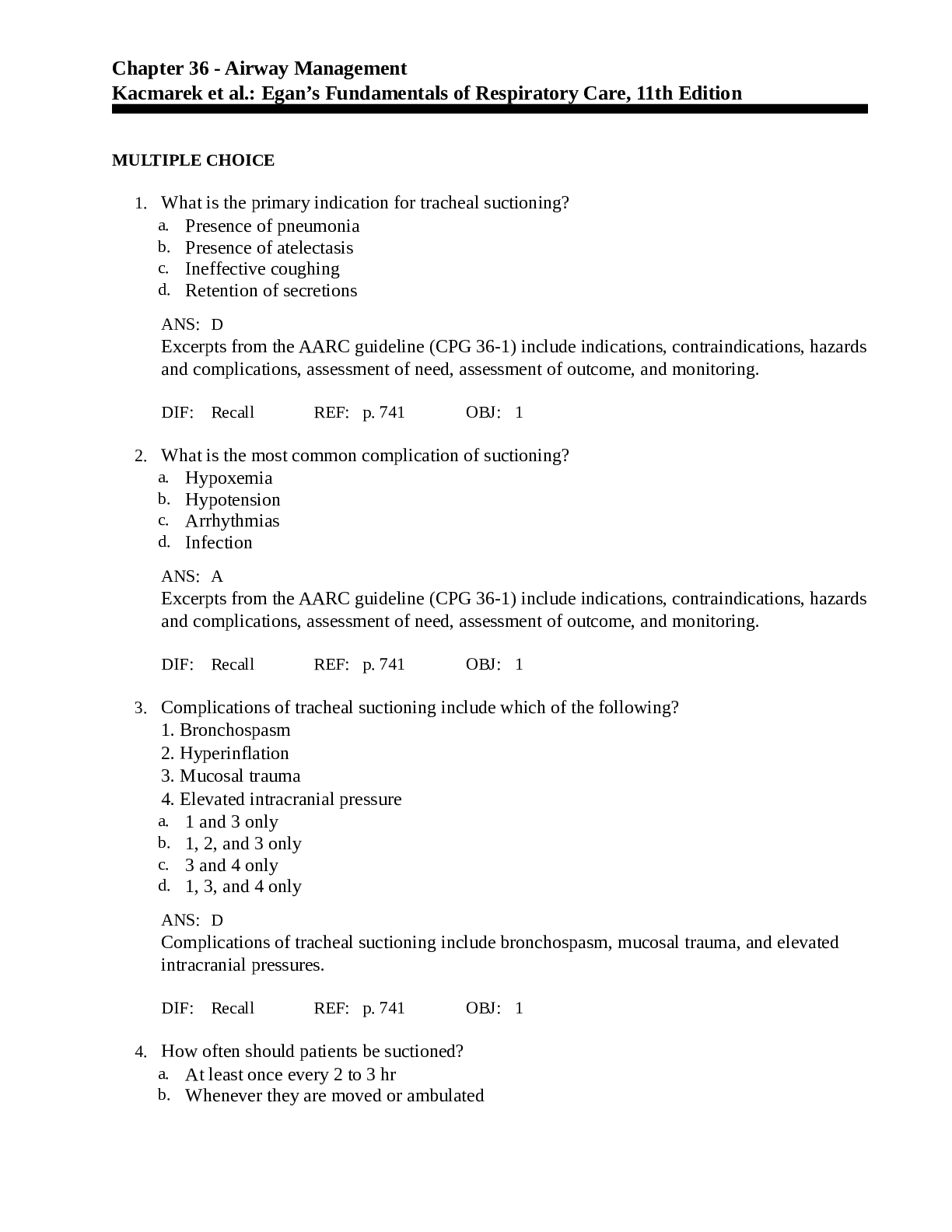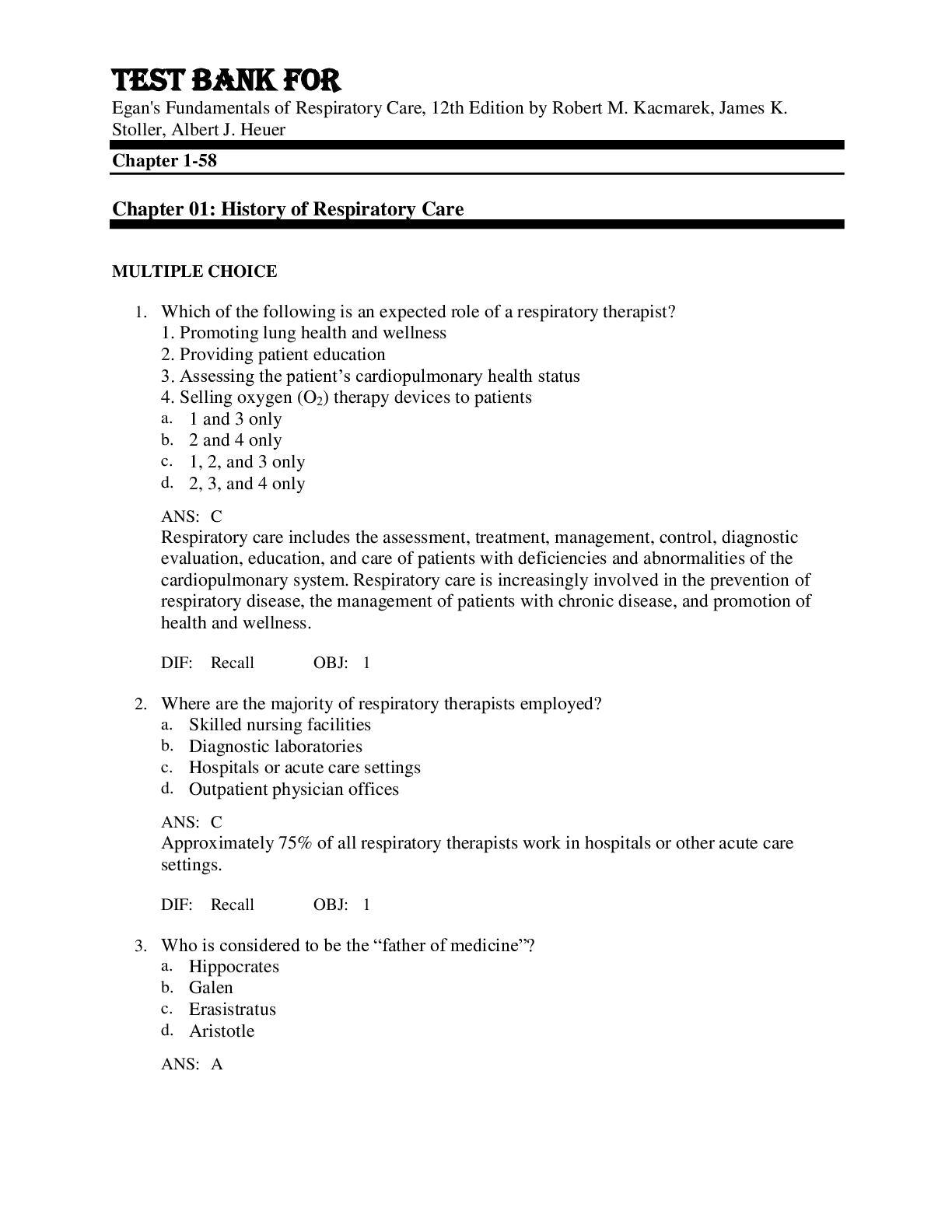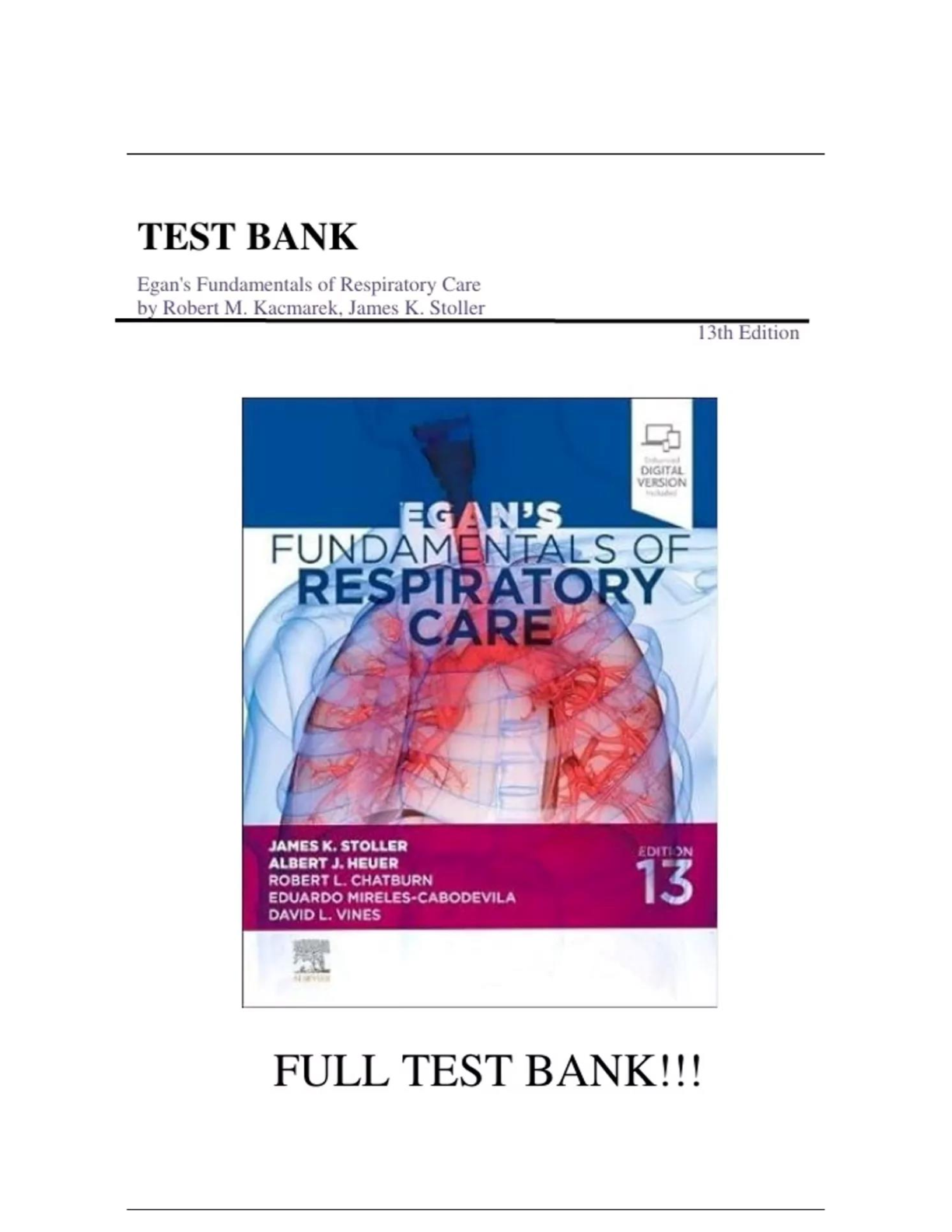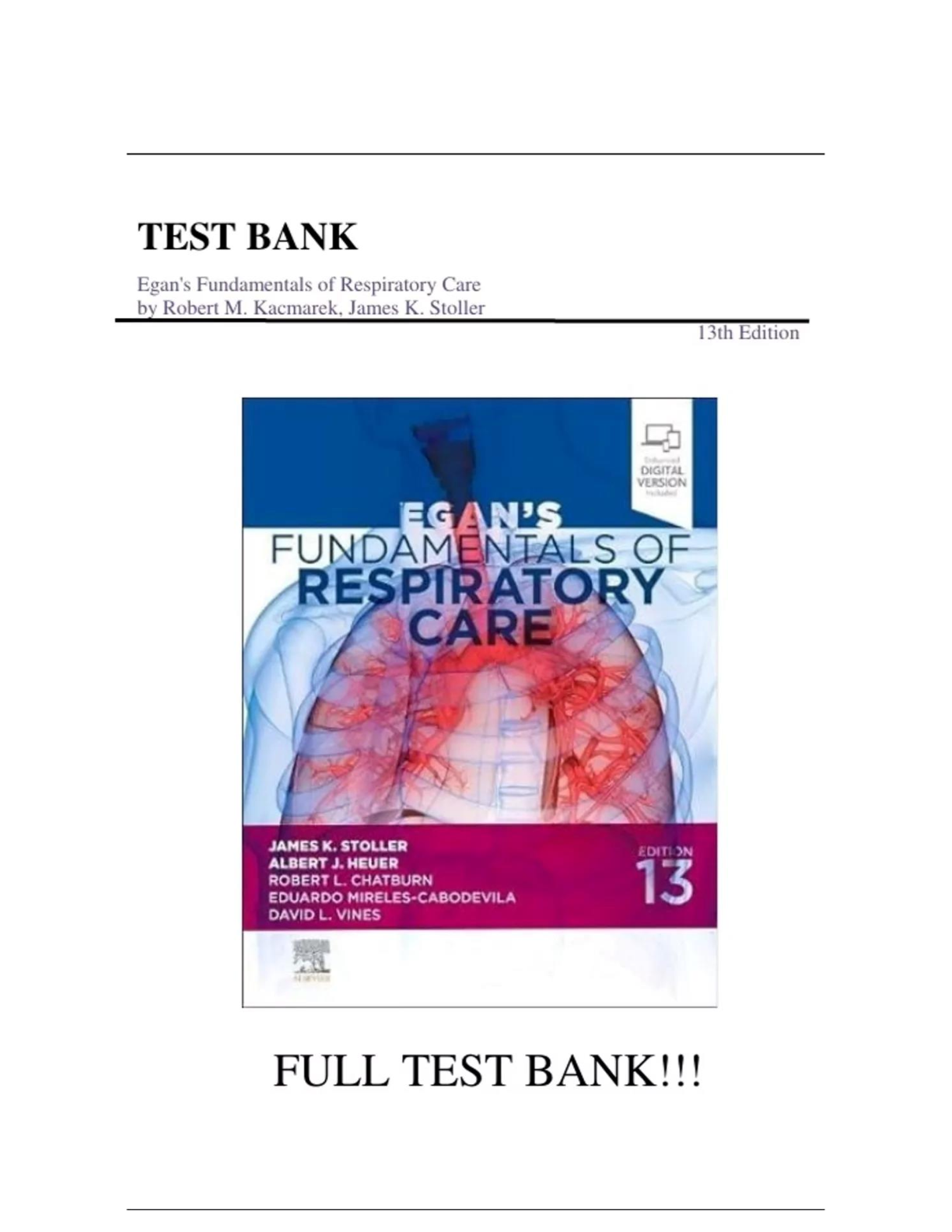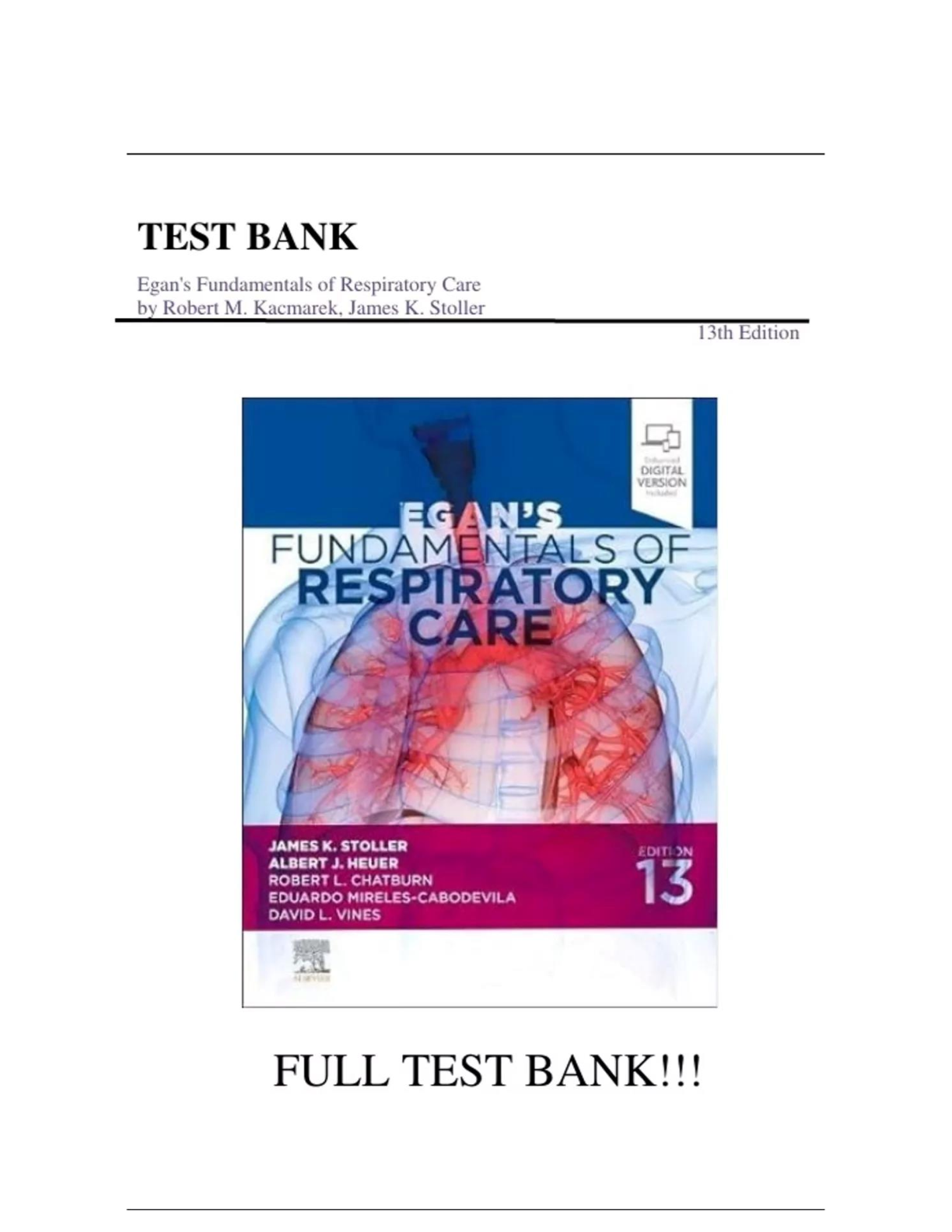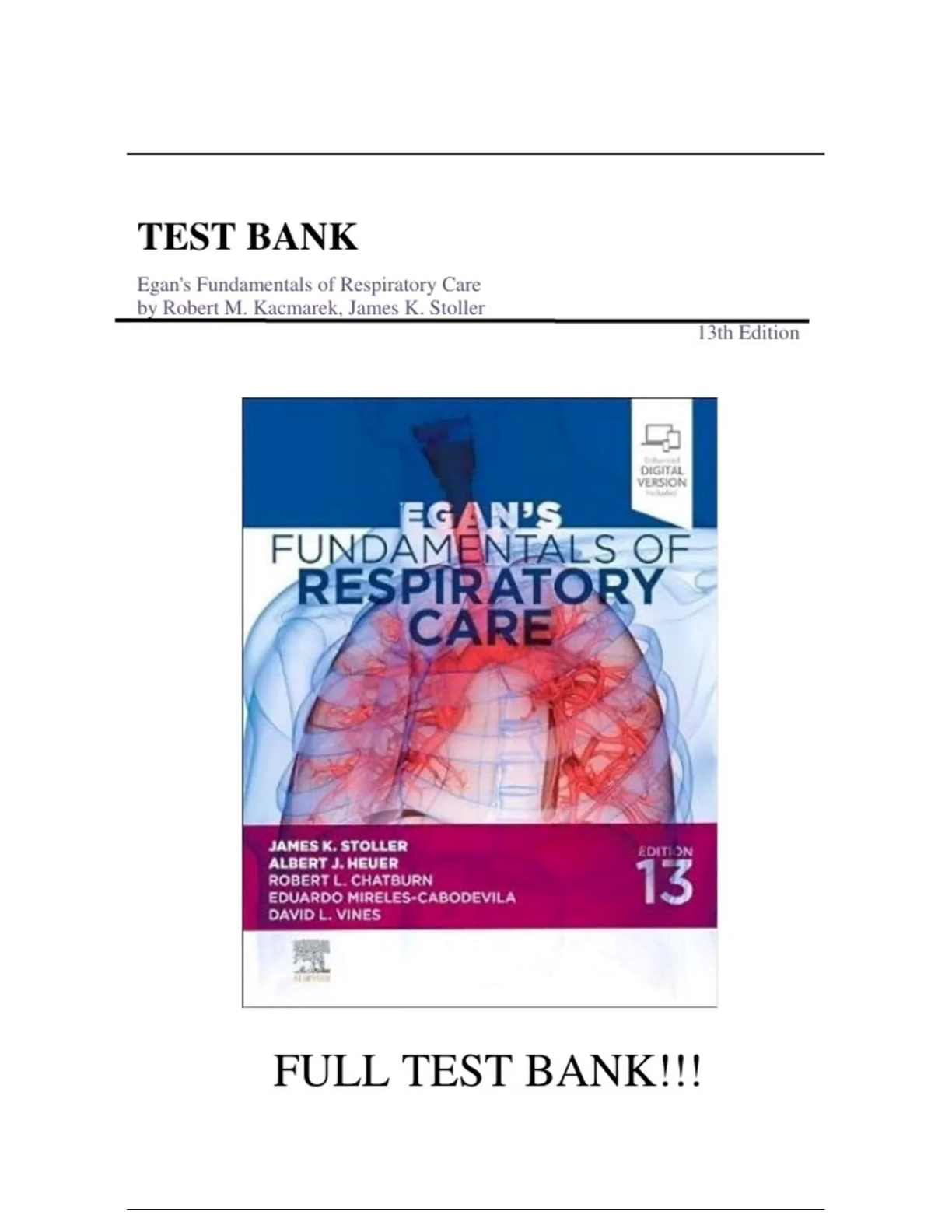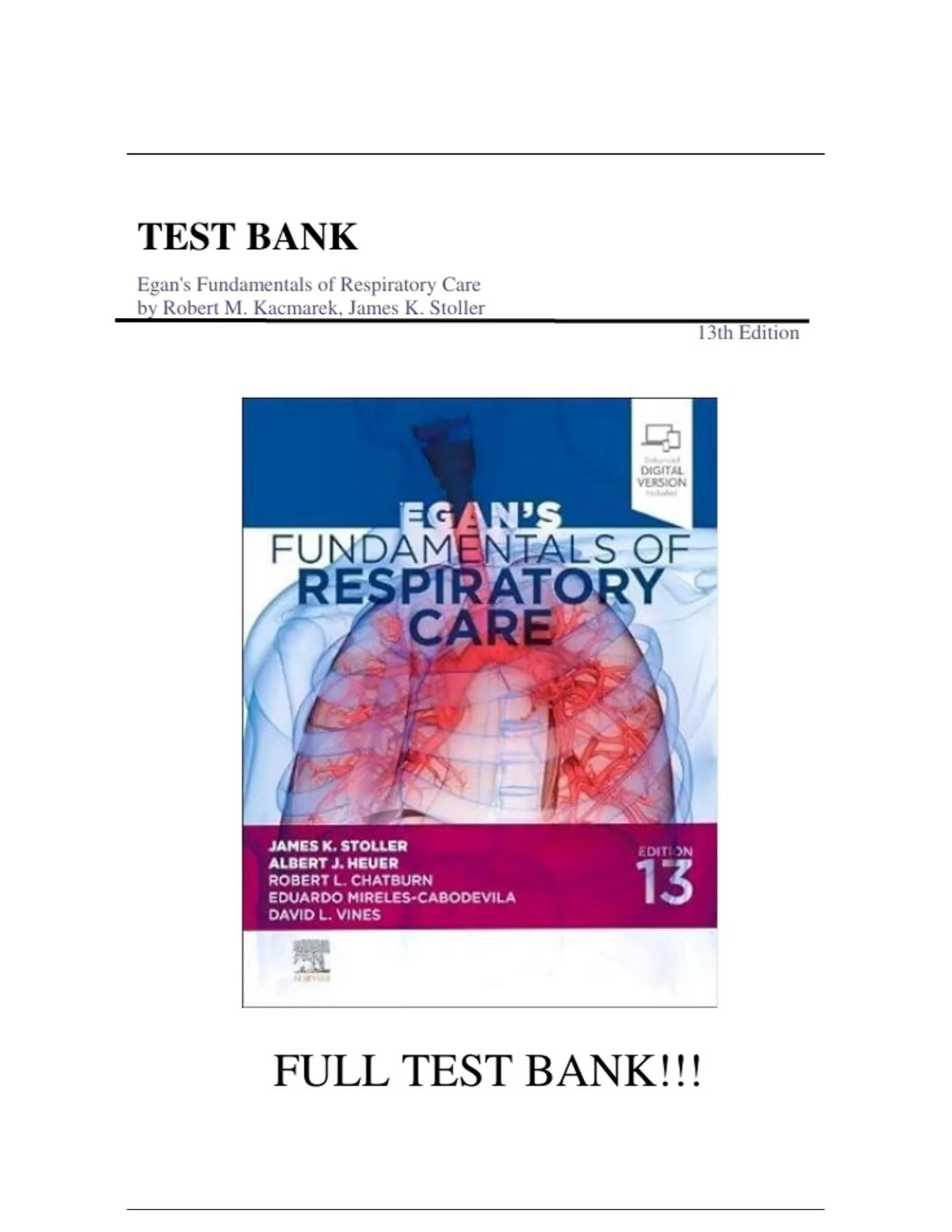*NURSING > TEST BANKS > Kacmarek et al.: Egan’s Fundamentals of Respiratory Care, 11th Edition (All)
Kacmarek et al.: Egan’s Fundamentals of Respiratory Care, 11th Edition
Document Content and Description Below
Chapter 39 - Aerosol Drug Therapy Kacmarek et al.: Egan’s Fundamentals of Respiratory Care, 11th Edition MULTIPLE CHOICE 1. Which of the following best defines an aerosol? a. Suspension o... f liquid droplets in a gas b. Suspension of particulate matter in a gas c. Molecular water dispersed throughout a carrier gas d. Suspension of liquid or solid particles in a gas 2. With which of the following devices are therapeutic aerosols generated? 1. Atomizers 2. Nebulizers 3. Humidifiers 4. Soft mist inhalers a. 1, 2, and 4 only b. 1 and 4 only c. 2 and 3 only d. 1, 2, 3, and 4 3. The mass of aerosol particles produced by a nebulizer in a given unit time best describes which quality of the aerosol? a. Stability b. Density c. Output d. Deposition 4. Which of the following describes the mass of drug leaving the mouthpiece of a nebulizer as aerosol? a. Single dose b. Emitted dose c. Multiple dose d. Output dose 5. Which of the following is a common method to measure aerosol particle size? a. Scan b. Gravimetric c. Cascade impaction d. Penetration studies 6. What measure is used to identify the particle diameter, which corresponds to the most typical settling behavior of an aerosol? a. Mean mass velocity coefficient (MMVC) b. Logarithmic standard diameter (LSD) c. Mean mass aerodynamic diameter (MMAD) d. Geometric standard deviation (GSD) 7. What measure is used to describe the variability of particle diameters in an aerosol? a. MMVC b. LSD c. MMAD d. GSD 8. Most nebulizers used in respiratory care produce which type of aerosol suspension? a. Monodisperse b. Microaerosol c. Heterodisperse d. Macroaerosol 9. What is the retention of aerosol particles resulting from contact with the respiratory tract mucosa called? a. Stability b. Density c. Penetration d. Deposition 10. Which of the following factors affect pulmonary deposition of an aerosol? 1. Size of the particles 2. Shape and motion of the particles 3. Physical characteristics of the airways 4. Class of medication being delivered a. 1 and 4 only b. 1 and 3 only c. 2, 3, and 4 only d. 1, 2, and 3 only 11. What is the primary mechanism for deposition of large, high-mass particles (>5 µm) in the respiratory tract? a. Inertial impaction b. Sedimentation c. Diffusion d. Brownian motion ,.......................................................................................continued............................................................................................ [Show More]
Last updated: 2 years ago
Preview 1 out of 36 pages
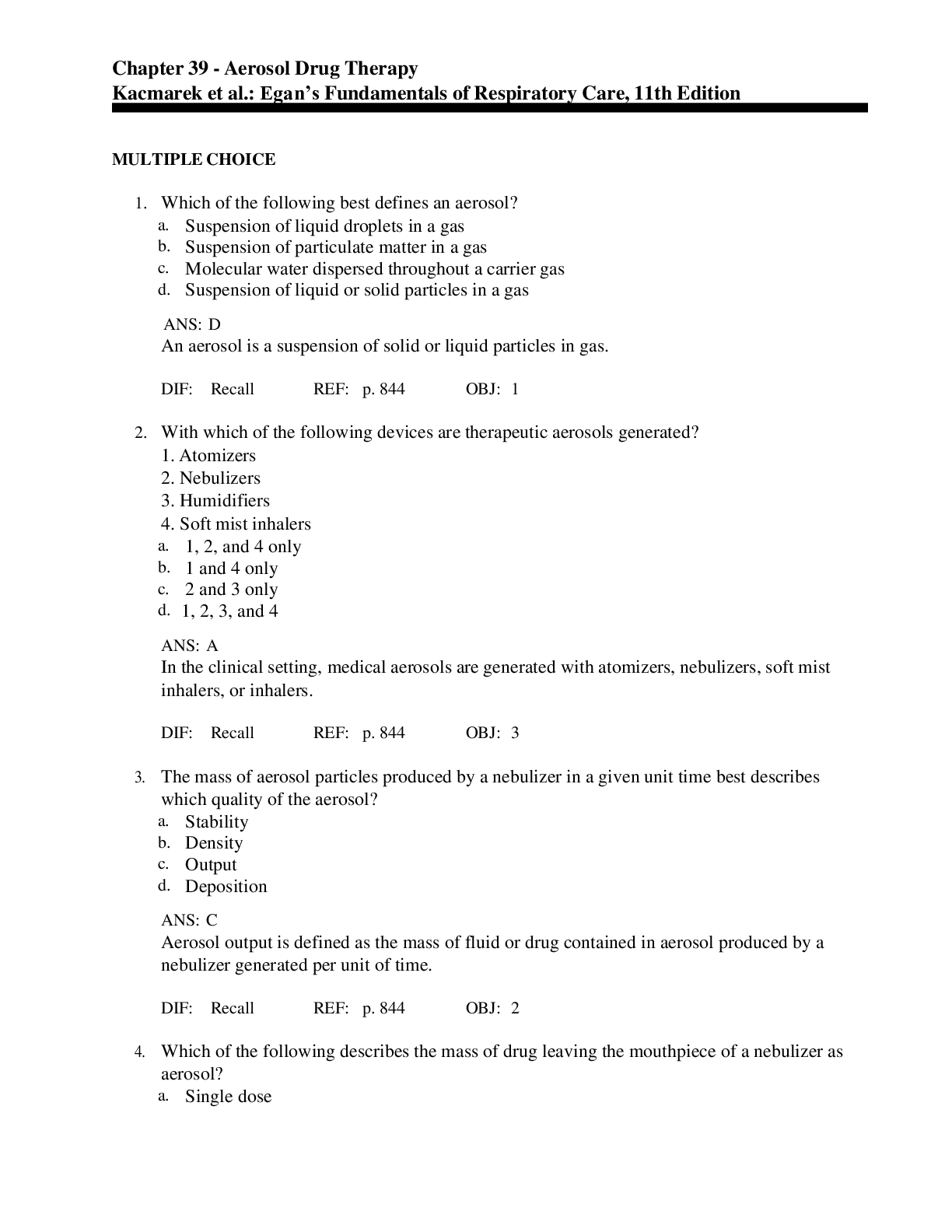
Buy this document to get the full access instantly
Instant Download Access after purchase
Buy NowInstant download
We Accept:

Reviews( 0 )
$13.50
Can't find what you want? Try our AI powered Search
Document information
Connected school, study & course
About the document
Uploaded On
Oct 02, 2022
Number of pages
36
Written in
Additional information
This document has been written for:
Uploaded
Oct 02, 2022
Downloads
0
Views
126



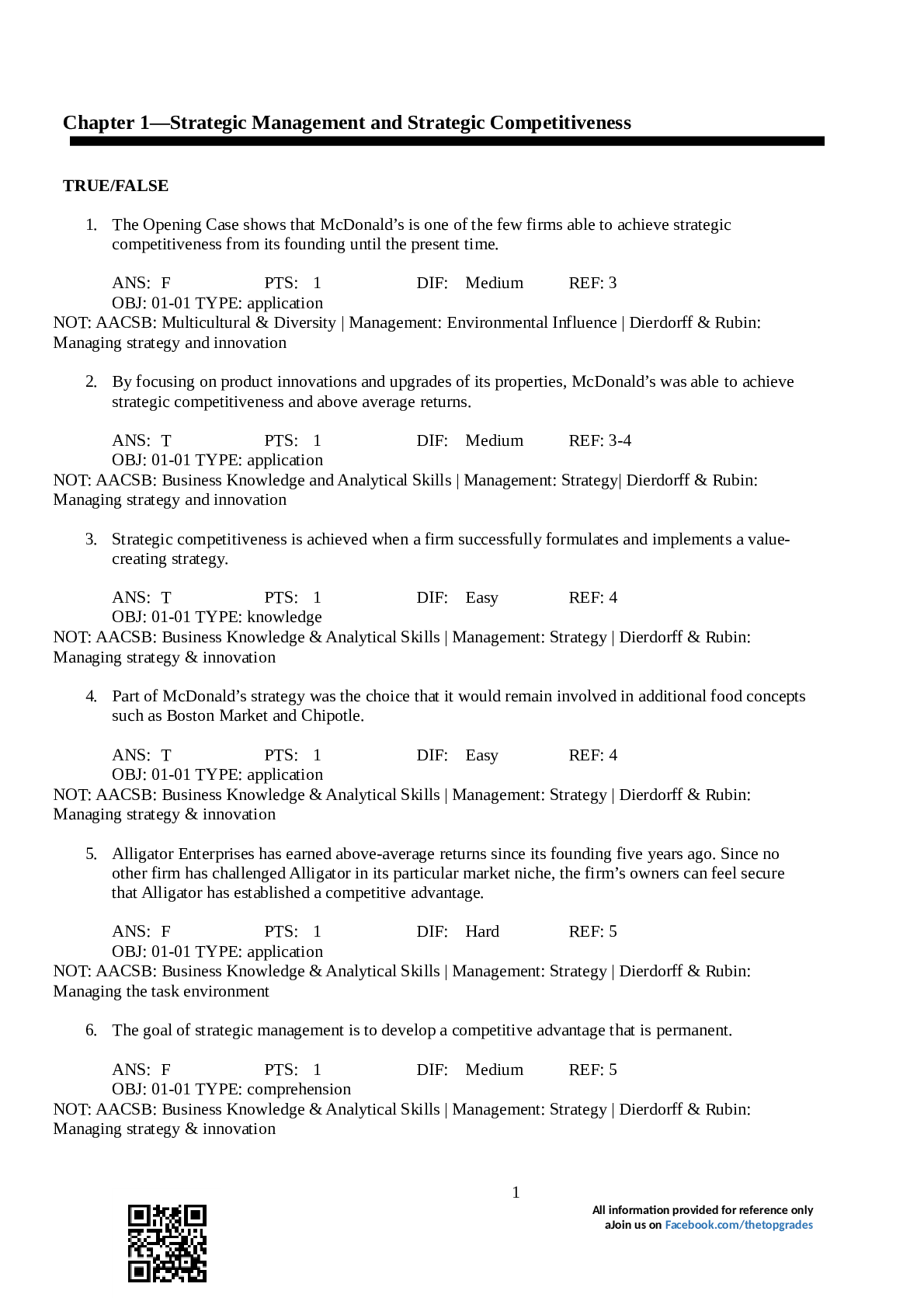


 (1).png)


